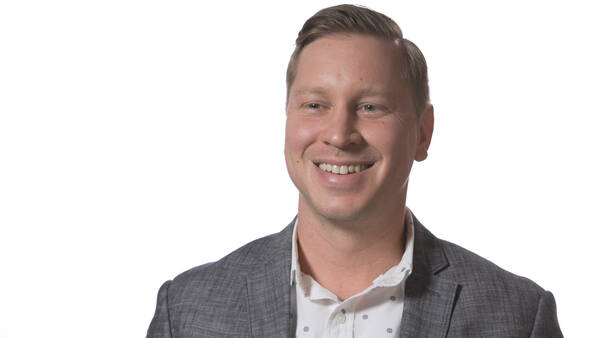
“What happens when attention shifts and information is lost from what we call working memory, how we can form and retrieve long-term memories, and how we remember to remember to perform our intended actions at the appropriate time in the future?”
— Nathan Rose
Nathan Rose is assistant professor of psychology and the William P. and Hazel B. White Collegiate Chair at the University of Notre Dame. His research focuses on the neuro-cognitive mechanisms of memory and how these mechanisms break down with age. More information can be found at his faculty page.
Video Transcript
I study memory, aging, and the brain.
My students and I are interested in how memory works, how the mind and brain accomplish the basic tasks of holding on to information so that it is accessible for goal-directed actions, what happens when attention shifts and information is lost from what we call working memory, how we can form and retrieve long-term memories, and how we remember to remember to perform our intended actions at the appropriate time in the future, what we call prospective memory.
What are the basic neuro-cognitive mechanisms that support these functions, how do they break down with age, and how can we intervene and train people to use memory strategies to perform these tasks more optimally?
Estimates are that by 2050 there will be double the number of adults aged 60 and above. Also individuals aged 80 years and above have about a 50% rate of developing dementia at some point in their life, so we’re really faced with this really big population crisis where we’re gonna have a lot of older adults living at home, outside of assisted care facilities trying to function independently in the presence of some pretty severe brain pathology.
For this form of memory, this prospective memory, remembering to do something in the future, there are some really simple memory encoding strategies that can be engaged that we know are really effective for enhancing this ability. So for example, there’s a really simple encoding strategy called the implementation intentions strategy. When you have something that you need to do, if you visualize yourself doing it and you say it — if you see it, say it — it makes it much more likely that in that future situation, you will spontaneously retrieve that intention and then carry out the action appropriately.
Neuroscience is a really exciting field because there’s so much left to be discovered. It’s really exciting because these new discoveries are coming out seemingly every day. It is really critical to incorporate a variety of really advanced new technologies and data analytic techniques. We are now in a position where we can ask and address much more nuanced questions and sort of get a window into the brain to kind of see when there’s information that is accessible or active in the neural representations, and so if I think about where, you know, our, you know, the next hundred years is going to look like, what we will discover, it’s really exciting and it’s great to be able to share my excitement with this research area with students here at Notre Dame.
Originally published by at al.nd.edu on September 10, 2018.